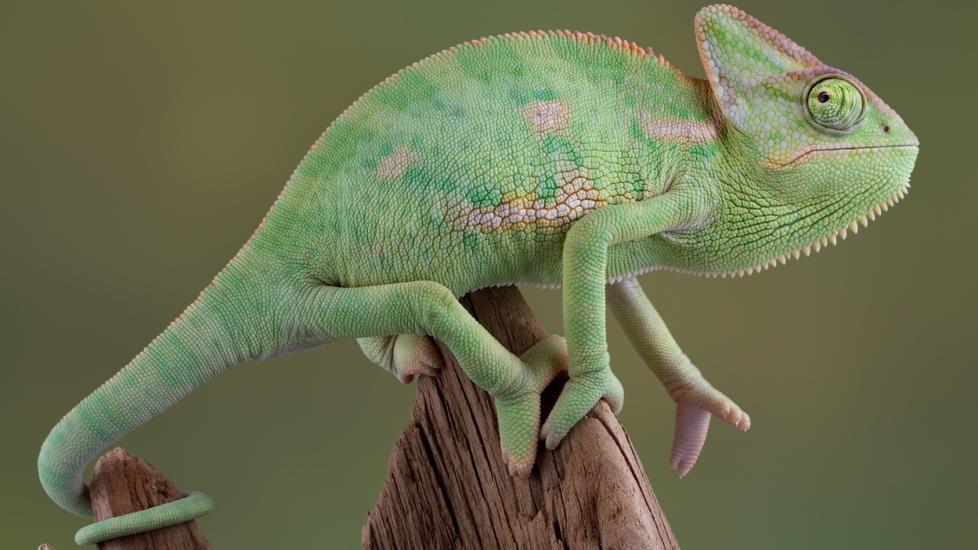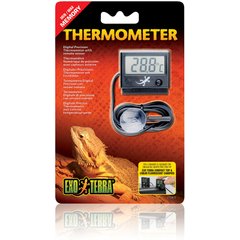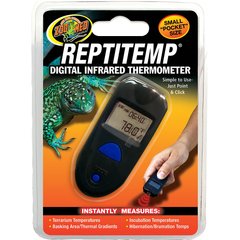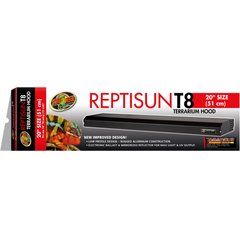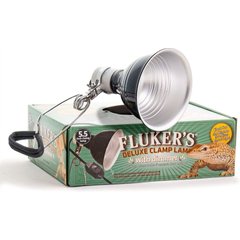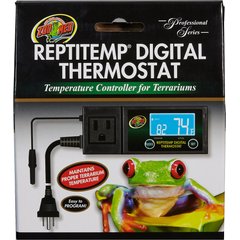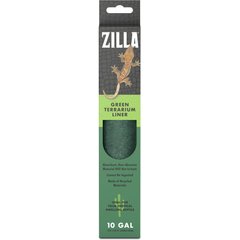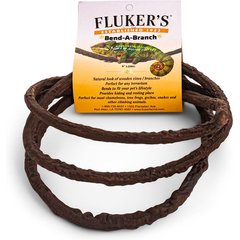Veiled Chameleon Care Sheet
iStock/CathyKeifer
Veiled Chameleon Species Overview
The veiled chameleon is native to the Arabian Peninsula, specifically Yemen and Saudi Arabia. In nature, veiled chameleons live in extreme environments, ranging from dry plateaus to coastal plains. Over time, these harsh climates have helped veiled chameleons evolve into highly adaptable animals.
Veiled chameleons have “monocular vision,” meaning each one of their eyes can move and see independently from the other. Each eye can swivel 180 degrees without the lizard’s head or body moving.
Veiled chameleons are also known for their long, curled, prehensile tails that allow them to grasp onto branches and stabilize their bodies while climbing. Chameleons also have prehensile toes that help them grip branches.
Depending on their temperature or mood, veiled chameleons can change colors! Color-changing also helps chameleons camouflage their bodies from potential predators. A relaxed veiled chameleon should be light green or blue.
When stressed or fearful, veiled chameleons will darken in color. Dark coloration can also be a sign of illness. Consult a veterinarian if your chameleon’s color is consistently dark or if the lizard exhibits any other changes in appearance.
Male veiled chameleons tend to be larger and more colorful than their female counterparts. Males also have tarsal spurs on their back legs.
The signature, horn-like bump atop a veiled chameleon's head is called a ‘casque.’ Researchers believe that veiled chameleon’s casque helps the lizard direct rainwater into its mouth for drinking. Veiled chameleons have sticky tongues that are nearly twice as long as their bodies. Chameleons can quickly extend and retract their tongues to catch bugs.
Veiled chameleons can become stressed or aggressive when handled too frequently. Pet parents should refrain from holding their pet chameleon regularly and only handle them when necessary.
Veiled Chameleon Characteristics
|
Difficulty of Care |
Intermediate |
|
Average Lifespan |
5+ years with proper care |
|
Average Adult Size |
18–24 inches long, depending on species |
|
Diet |
Omnivorous |
|
Minimum Habitat Size |
At least 2 feet in each dimension for juveniles; 3 feet in each dimension for adults |
Veiled Chameleon Supply Checklist
-
Appropriately-sized habitat (at least 2 feet in each dimension for juveniles; 3 feet in each dimension for adults)
-
Thermostat
-
Calcium supplement, with and without vitamin D
-
Cricket keeper
-
Cricket quencher
-
Thermometers (at least two: one for the cool zone, and one for the basking zone)
-
Mister
Veiled Chameleon Habitat
Choosing the Right Enclosure
Juvenile veiled chameleons should be housed in a habitat that has at least 2 feet of space in each dimension (24” L x 24” W x 24” H). Rather than a glass enclosure, a screened habitat is recommended to allow for proper ventilation and prevent mold growth.
Chameleons are natural climbers, so habitats should be taller than they are wide to ensure the lizard has plenty of space to exercise. Pet parents need to increase the size of their chameleon’s enclosure as it grows.
With proper care, veiled chameleons will reach their adult size in 9–12 months. At a minimum, an adult veiled chameleon’s habitat should have 3 feet of space or more in all dimensions (36” L x 36” W x 36” H). Always provide the largest habitat possible.
Habitat Mates
Veiled chameleons should always be housed alone; they can become aggressive when kept in pairs or groups. Never keep different species of reptiles or other animals in the same habitat.
Temperature
Veiled chameleons need a thermal gradient in their enclosure so they can warm up and cool down as needed. The recommended temperature for the warm end of a veiled chameleon’s habitat is 90–95 F, while the cooler end should be kept at 70 F. When not kept in an appropriate temperature range, reptiles are more likely to become ill and immunosuppressed.
Pet parents need to check the temperatures of their chameleon’s habitat daily. Two thermometers—one in the warm area and one in the cool area—should be placed in the enclosure so that both zones can be checked at once. A digital point-and-shoot thermometer can also be used to read habitat temperatures instantly.
Light and Heat Sources
An incandescent light or ceramic heater should be added to one end of a chameleon’s tank to create a basking area for them to use during the day.
The wattage needed for the bulb depends on the size of the enclosure, the distance of the bulb from the reptile, and the ambient temperature of the room in which the enclosure is kept. Adjust the wattage of the bulb to maintain the recommended temperature gradient within the tank tank.
Note: Some light bulbs provide not only light to the tank, but also heat and/or ultraviolet (UV) light.
Heat sources should be attached to a thermostat to keep temperatures within a safe and comfortable range. Hot rocks should not be used because they can get too warm and cause injury.
If an under-tank heating pad is used, it must be connected to a thermostat to prevent your chameleon from getting burned.
White incandescent lights should not be left on continuously, as they will disrupt the chameleon’s natural sleep cycle and negatively affect its overall health. At night, switch to a nocturnal or infrared light to ensure the lizard can rest.
UV Light
Studies show that daily exposure to UVA/UVB light can improve reptiles’ immune system function and promote normal behavior. Chameleons need daily exposure to UVB rays so they can produce vitamin D in their skin, which in turn allows them to absorb dietary calcium. Without adequate UVB exposure, chameleons are at a greater risk of developing a range of life-threatening illnesses, including metabolic bone disease.
Chameleons need about 10–12 hours of UVB light daily. Pet parents should place a horizonal branch 6–8 inches below the UV bulb to create a basking area.
UVB light potency wanes over time so it is important to replace the bulb every 6 months, even if the bulb still emits light.
Humidity
A veiled chameleon's enclosure should have a humidity level under 60%. A hygrometer (humidity gauge) should be used to measure the enclosure’s humidity daily.
Pet parents should mist the walls, plants, and décor inside their chameleon’s habitat multiple times a day. This will help maintain proper humidity levels and provide the chameleon with water to drink.
Substrate
In general, substrate is not needed or recommended for chameleon habitats. Chameleons are known to eat their bedding, which can lead to life-threatening gastrointestinal obstruction. Water dripping onto bedding within the habitat can also encourage mold to grow on bedding, posing a risk of serious skin and respiratory infections.
If bedding must be used in the enclosure, use reptile carpet, coconut fiber, paper towels, or plain newspaper to line the bottom of the habitat, and change the bedding frequently.
Decor and Accessories
Ideally, pet parents should create a dense area of plants and vines on one side of their chameleon’s habitat for hiding. The other side of the habitat should be more exposed and sparsely decorated with branches for basking.
Plants
Veiled chameleons love to hide under leaves! Pet parents can use live or artificial plants to enrich their chameleon’s environment and create hiding spots in the enclosure. Ensure that any live plants are non-toxic and pesticide-free. Broad-leafed plants (like Ficus and hibiscus) make excellent additions to a chameleon’s habitat.
Live plants will help retain humidity in the environment. Avoid silk plants, as they cannot absorb water.
Branches
A chameleon’s habitat needs multiple branches for basking and perching. Choose a perching branch that’s larger in diameter than the chameleon’s feet to ensure the lizard can grasp onto it securely. Add a diagonal branch across the enclosure so the chameleon can travel and explore.
Branches must be large and sturdy enough to support the chameleon’s body weight. Otherwise, the branch could topple over and cause injury.
Veiled Chameleon Diet and Nutrition
Veiled chameleons are omnivorous reptiles and should be fed a variety of insects along with smaller amounts of fruits and vegetables. Juvenile chameleons need to be fed daily, while adults should be fed every other day.
Note: Since chameleons will not drink water from a bowl, pet parents should hydrate their chameleon by misting its habitat multiple times a day or by using a commercially-available mister or drip system. The chameleon with collect water from leaves and the environment, which is why it is important to mist multiple times daily.
A nutritious and well-balanced diet for a veiled chameleon consists of a variety of gut-loaded insects, including crickets, grasshoppers, mealworms, roaches, locusts, wax worms, and silkworms. Insects should make up the basis of a veiled chameleon’s diet.
-
Insects should be no larger than the width of the chameleon’s head.
-
Juvenile chameleons should be fed at least 12 to 20 small crickets daily. Adult chameleons should be fed every other day and will typically eat 12 large crickets or 5 to 6 superworms at a time.
-
Never offer more insects than the chameleon can consume in one feeding session. Any uneaten insects should be removed from the habitat. Otherwise, they may chew on and damage the lizard’s skin.
Dark, leafy greens, and other vegetables may be offered occasionally in small quantities. Dandelion leaves, collard greens, kale, deep green lettuces, and spinach are all appropriate for chameleons.
“Hard”/non-leafy vegetables, like broccoli and carrots, can be chopped into bite-sized pieces and offered on occasion.
Live, non-toxic plants can be kept in a chameleon’s habitat to double as decoration and food. Pothos, hibiscus, dracaena, schefflera and Ficus are a few chameleon-safe options.
Chameleons will not drink water from a bowl and must rely on water dripping off the plants in their environment for hydration. Pet parents should mist plants four to five times a day for two minutes at a time manually or with the help of an automatic misting system/dripper. Be sure to mist the chameleon multiple times a day too.
Veiled Chameleon Vitamin Supplements
Before feeding, pet parents should dust their chameleon’s insects with a powdered vitamin supplement. Chameleons need three vitamin supplements in their diet: a calcium supplement with vitamin D, a calcium supplement without vitamin D, and a multivitamin powder designed for reptiles.
Calcium supplements should be alternated. Pet parents should use a powdered calcium supplement with vitamin D for one feeding session, and then use a calcium supplement without vitamin D the next. A multivitamin powder should be used once a week.
To dust insects quickly and efficiently, place insects in a bag or disposable plastic container along with a powdered supplement. Then, shake the bag lightly until the insects are coated evenly in powder.
How To Gut-Load Insects
Before being fed to a chameleon, live insects must be ‘gut-loaded’ with a nutrient-dense insect supplement to improve their nutritional value. Gut-loading diets are fortified with vitamins and minerals to help provide optimal nutrition to the reptiles that feed on them.
To gut-load prey, pet parents will need to place the insects in a container with a gut-loading diet that they can gorge on. Insects should be gut-loaded for at least 24–72 hours before being dusted with a vitamin supplement and fed to a chameleon.
Veiled Chameleon Cleaning and Maintenance
Spot-clean your chameleon’s habitat daily, removing any droppings and discarded food. A chameleon’s habitat must be disinfected and cleaned thoroughly at least once a week. Pet parents should always wash their hands before and after handling their chameleon or its habitat’s contents.
To clean a chameleon’s habitat, take these steps:
-
Move the chameleon to a secure environment. Remove any décor, accessories, and substrate (if used) from the habitat.
-
Scrub the empty tank and any furnishings with a reptile habitat cleaner or 3% bleach solution. The bleach solution should stay on the habitat for at least 10 minutes to ensure that the surfaces are properly disinfected. If using a commercial habitat cleaner, follow the manufacturer's instructions.
-
Rinse the habitat and accessories thoroughly with water, making sure to remove any trace amounts or residual smells left by the cleaning agent or bleach solution.
-
Allow the habitat and its contents to dry completely before placing new substrate (if used) and clean accessories into the habitat.
-
Return the chameleon to the clean habitat.
Veiled Chameleon Grooming & Care
Shedding
A healthy veiled chameleon will shed its skin regularly. To encourage healthy shedding, pet parents should mist their chameleon and its habitat several times a day. Young, growing chameleons will shed their skin more frequently than adults.
Unlike snakes, chameleons shed their skin in small patches rather than a single, complete piece.
When misting, avoid aiming the mister directly at your chameleon’s face so as not to startle or stress them.
All reptiles are potential carriers of infectious diseases, including Salmonella bacteria, which is zoonotic (transmittable to humans). Pet parents should always wash their hands before and after handling their chameleon or its habitat’s contents.
Veiled Chameleon Veterinary Care
Annual Care
Veiled chameleons should be examined by a veterinarian once annually. Some veiled chameleons are very sensitive to stress. They can be transported in a dark, covered transport carrier or adapted bin with ventilation, or when possible an in-home veterinarian that sees exotic pets can come to their enclosure for the exam.
Be prepared with photos of their enclosure, diet, heaters, lights (including exact specifications from the packaging) when bringing them into a veterinary clinic, so your veterinarian can assess their husbandry as part of the exam.
Signs of a Healthy Veiled Chameleon
-
Clean, clear, freely moveable eyes
-
Intact skin
-
Healthy, intact nails and nail beds
-
Clean, pink, moist oral cavity
-
Clean, dry nostrils
-
Clean vent
-
No swelling, lumps, or bumps
-
Good appetite
-
Calm, bright attitude
When to Call a Vet
-
Eyes that are cloudy, swollen, shrunken, or have discharge
-
Oral ulcerations, discharge, or drooling
-
Swellings or discharge at the corners of the mouth
-
Nasal discharge
-
Stuck shed, especially at the toes or eyes
-
Lumps or bumps
-
Swollen joints
-
Discharge, staining, or protrusions from vent
-
Anorexia (not eating)
-
Lethargy
Common Illnesses in Veiled Chameleons
-
Nutritional deficiencies leading to anorexia
-
Vent prolapse
-
Swollen eye
-
Hypovitaminosis A
-
Trauma
-
Gout
Veiled Chameleon FAQs
How do you take care of a veiled chameleon for beginners?
Focus on an appropriate enclosure. Temperatures including a gradient must always be in the normal range for the chameleon otherwise they will struggle to eat, stay active, and fight infections. Feed an appropriate and varied diet, provide adequate climbing and hiding spaces, and keep their lighting on a timer with appropriate bulbs.
How often do you feed a veiled chameleon?
Adult veiled chameleons eat about every other day, though juveniles need to be fed a couple times each day.
Do veiled chameleons like to be misted?
While veiled chameleons need their enclosure misted at least twice daily, misting a veiled chameleon directly usually stresses them so focus on soaking the wood and substrate of the enclosure instead. This helps maintain high humidity levels throughout the day.
Are veiled chameleons high maintenance?
Yes. It is very easy for them to become ill or stop eating if any of their parameters are abnormal even just for portions of the day, so only people with the time and resources available to care for their needs should keep veiled chameleons.
Do veiled chameleons need a heat lamp at night?
UVA, UVB, and heat lamps should be turned off at night and veiled chameleons do prefer for temperatures to drop at night. If their enclosure would lose too much temperature without a heat lamp, lower heat night bulbs can be used.
How long should you mist a chameleon?
You shouldn’t mist a chameleon directly, but their enclosure instead. Timing depends on the size of the enclosure but usually it takes about five to ten minutes per session.
